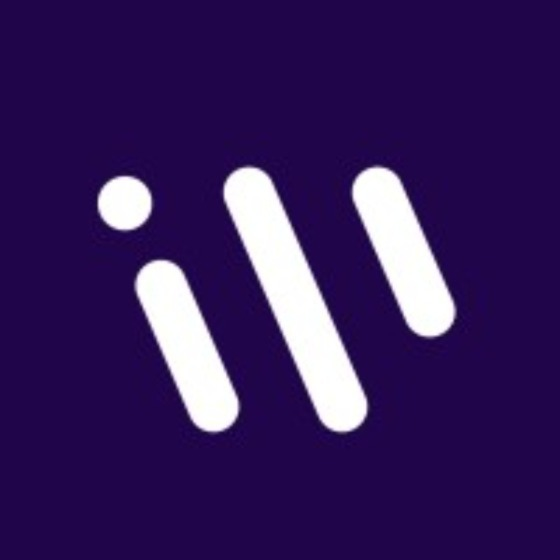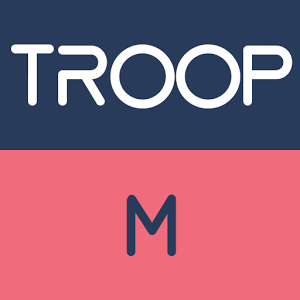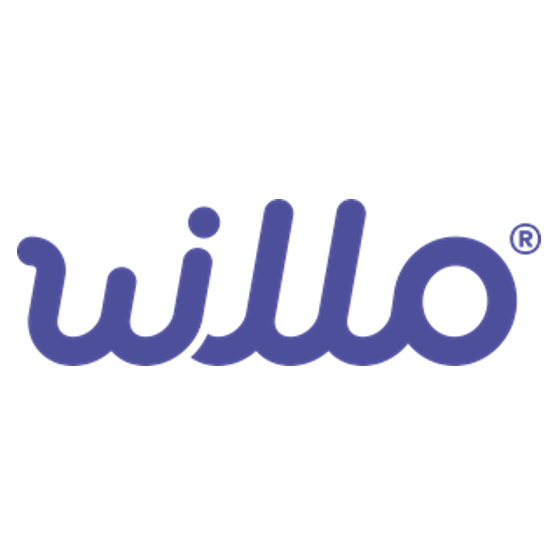10 Best Communications Software Shortlist
Here's my pick of the 10 best software from the 20 tools reviewed.
Get free help from our HR software advisors to find your match.
With so many different communications software available, figuring out which is the right one for your company is tough. You know you want a tool to bridge the gap between teams and make group communication easier, but you need to figure out which tool is best. In this post, I'll help you make your choice easy by sharing my insights on the best communications software and apps to send messages, share files, and conduct virtual meetings with remote colleagues from anywhere.
Why Trust Our Software Reviews
We've been testing and reviewing HR software since 2019. As HR professionals ourselves, we know how critical and difficult it is to make the right decision when selecting software.
We invest in deep research to help our audience make better software purchasing decisions. We've tested more than 2,000 tools for different HR use cases and written over 1,000 comprehensive software reviews. Learn how we stay transparent, and take a look at our software review methodology.
The Best Communications Software Comparison Chart
This comparison chart summarizes basic details about each of my top communications software selections. You can view pricing details and the availability of free trials or demos side-by-side to help you find the best software for your budget and business needs.
| Tool | Best For | Trial Info | Price | ||
|---|---|---|---|---|---|
| 1 | Best for connecting growing teams and SMEs | Free demo available | Pricing upon request | Website | |
| 2 | Best for fostering employee engagement | Free demo available | Pricing upon request | Website | |
| 3 | Best for instant messaging | 7-day free trial | From $2.50/user/month | Website | |
| 4 | Best emergency communication software | Free demo available | Pricing upon request | Website | |
| 5 | Best virtual phone communication system | 14-day free trial | From $27/user/month | Website | |
| 6 | Best for communicating with clients | 30-day free trial | From $4.50/user/month (billed annually) | Website | |
| 7 | Best video conferencing communication software | Free plan available | From $15.99/user/month | Website | |
| 8 | Best for frontline workers | 90-day free trial | Pricing upon request | Website | |
| 9 | Best for assessing employee sentiment | 14-day free trial | From $8/user/month (billed annually) | Website | |
| 10 | Best for cohesive project communication | 14-day free trial (standard plan) + 30-day free trial (premium plan) + free plan available. | From $3/user/month. | Website |
-

Rippling
Visit WebsiteThis is an aggregated rating for this tool including ratings from Crozdesk users and ratings from other sites.4.8 -

Willo
Visit WebsiteThis is an aggregated rating for this tool including ratings from Crozdesk users and ratings from other sites.4.8 -

edays
Visit WebsiteThis is an aggregated rating for this tool including ratings from Crozdesk users and ratings from other sites.4.3
Overviews of the 10 Best Communications Software
In this section, I will give a detailed overview of the top 10 communication software solutions. I will highlight their key features and benefits and explain how they can improve internal communication and employee engagement.
Hub is an advanced, employee communication software designed for growing teams and SMEs to enhance connectivity, internal communication, and employee engagement.
Why I picked Hub: Hub supports two-way communication and collaboration through feedback and group forums. You can target your communication for various audiences through intelligent tagging and tailored emails. I also like that it includes tools for communication and insights around employee well-being through forms, surveys, and polls. Additionally, Hub facilitates resource sharing and collaboration across multiple locations in a secure workspace and includes features such as likes, comments, and usage reports.
Hub is fully mobile responsive, allowing remote access to all features, and includes continuous upgrades based on customer feedback to ensure it remains a cutting-edge solution for internal corporate communications.
Another thing that stands out to me is the fact that Hub champions sustainability and will plant 50 trees for each new HUB sold, with a focus on community-based reforestation projects that support communities affected by climate change. They also offer SME and nonprofit discounts and don't charge setup fees, making it a good solution for smaller to medium-sized businesses.
Hub Standout Features & Integrations
Standout features include access to all areas with no hidden costs or add-ons, free upgrades ensuring users always have the latest version, and a user-friendly interface designed for simplicity and ease of navigation.
Hub can be set up rapidly, often within 48 hours, providing a fully branded intranet experience.
Integrations include Single Sign-On, Gmail and Microsoft Outlook email and calendar accounts, Google Drive, Microsoft OneDrive, SharePoint, third-party feeds and HTML widgets, and Enabler email marketing software.
Pros and cons
Pros:
- Advanced AI analytics
- Customizable micro-applications
- Comprehensive communication suite
Cons:
- May not be cost effective for small biz
- Slight learning curve
Workvivo is an employee experience platform that combines communication features and employee engagement tools within a social intranet-style platform. The platform offers features that support information sharing, collaboration, and recognition to give every employee a voice.
Why I picked Workvivo: I included Workvivo because it emphasizes employee communication and engagement through its social intranet capabilities. What makes Workvivo stand out to me is its ability to gather and monitor workplace insights in dashboards and its versatility in uniting and engaging employees across various industries. The platform supports employee engagement with its comprehensive approach to communication, culture amplification, and support for remote working, which are essential for nurturing a connected and engaged workforce.
Workvivo Standout Features & Integrations:
Some of Workvivo's standout features include community groups for collaboration and knowledge-sharing, a social intranet to centralize messaging, a documents portal, and inclusive communication channels for leadership and team member interactions.
Additionally, the platform provides workplace insights through analytics and ensures security for data and communication while allowing users to personalize their experience through preferences and cookie consent management.
Integrations include Google Drive, Microsoft Teams, Salesforce, Slack, Workday, Zoom, and others.
Pros and cons
Pros:
- Platform offers multiple features to support employee engagement
- Helpful customer support resources
- Supports multiple spaces for departments and topics
Cons:
- Has a bit of a learning curve to master
- Mobile app has limited functionality
Troop Messenger is a real-time messenger application that helps businesses manage team collaboration and communication.
Why I picked Troop Messenger: I selected Troop Messenger because of its burnout function, which provides an exclusive method for private chatting. You can set a timer, and once the time is up the message disappears. This is a clever way to have a discussion without any evidence left behind. Another exceptional feature is forkout, which lets you send a single message or attachment to numerous people without creating a group.
Troop Messenger Standout Features and Integrations:
One standout feature of Troop Messenger is the 'info' function, which provides information on each message sent and received, such as the time it was read and delivered. The 'recall' feature allows users to delete a message on both the sender and receiver's end, but only within ten minutes of sending it.
Additionally, messages can be marked as important, and the 'Respond Later' option allows users to set a reminder to reply when they have more available time.
Integrations through Zapier include Asana, GitHub, Gmail, Zoom, Google Calendar, Freshdesk, HubSpot, ClickUp, and Microsoft Outlook.
Pros and cons
Pros:
- Supports multiple languages
- Includes self-message
- Secure
Cons:
- Chat filters hidden
- No built-in meeting recording
AlertMedia is an emergency communication and mass notification software that helps companies notify employees of emergencies and ensures the right people receive critical information when needed.
Why I picked AlertMedia: I chose AlertMedia because of its unwavering dedication to keeping employees safe. This all-inclusive solution offers mass notifications and a 24/7 monitoring team for added assurance. The Employee Safety Monitoring App sets AlertMedia apart because it turns a standard mobile phone into a powerful safety device with one-touch access to law enforcement. Another important factor for me was the app's capability to read and respond to urgent organizational messages.
AlertMedia Standout Features and Integrations:
AlertMedia provides standout features that improve communication in both directions, enabling individuals to confirm their well-being or share information about current events. Users can effortlessly send notifications through various channels. AlertMedia also offers pre-made message templates that ensure consistent responses during emergencies, saving valuable time.
Integrations are available with the Fusion Framework System.
Pros and cons
Pros:
- Responsive customer support
- GDPR and CCPA-compliant system
- Real-time notifications
Cons:
- Pricing not transparent
- No free trial
GoToConnect is an all-in-one phone, meeting, and messaging software built for small buisenesses.
Why I picked GoToConnect: I selected GoToConnect for its easy-to-use and advanced VOIP calling abilities, which enable teams to deliver excellent customer service from anywhere. With features like virtual receptionists and voicemail, connecting with clients and teammates is always possible. The virtual voicemail allows you to listen to messages from anywhere, making it easy to prioritize important ones.
GoToConnect Standout Features and Integrations:
GoToConnect lets businesses quickly set up new phone numbers or use their current ones. They offer audio conferencing for businesses, supporting calls with up to 250 people. Their video conferencing is safe and can be used from anywhere and on any device.
Integrations include Zendesk, Salesforce, Miro, Microsoft Teams, Google Calendar, Salesforce Lightning, Prezi, Docebo, and CirQlive.
Pros and cons
Pros:
- Excellent sound quality
- 24/7 customer support
- Easy to use
Cons:
- No mobile app for admin portal
- Relies on internet connection
Flock is a communication and collaboration tool designed to streamline team communication and enhance productivity.
Why I picked Flock: I selected Flock because of its impressive ability to widen the circle of collaboration. Inviting guest users ensures that decisions aren't just made based on internal opinions but also factor in valuable feedback from external stakeholders.
Another distinguishing feature is its voice notes option. There are moments when typing can't capture the nuances of a message, so sending voice notes helps compare and judge tones, making it easier to determine the context or emphasis of a conversation.
Flock Standout Features and Integrations:
One of the standout features of Flock is its channel messaging system, which allows users to organize their conversations. With this feature, users can create channels for specific projects and priorities, making it easier to hold strategy meetings and brainstorming sessions and get instant feedback. Flock also supports in-app video and voice conferencing, enabling teams to meet even in different locations. Furthermore, the integrated search feature in Flock helps users find necessary information quickly.
Integrations include Asana, Dropbox Business, GitHub, Google Analytics 360, Google Drive, Google Workspace, Jira, Mailchimp, Trello, and Twitter.
Pros and cons
Pros:
- Special pricing for non-profits
- Mobile app
- User-friendly
Cons:
- Busy interface
- Limited customization
Zoom is a video conferencing platform for online video conferences, webinars, and live chats through their desktop or mobile app.
Why I picked Zoom: I chose Zoom because of features that help me in a meeting. The virtual background that lets me place an image or video behind me helps keep my real location hidden while still looking professional. Another cool thing about Zoom is its translated captions feature, which makes it easy for employees who speak different languages to communicate without the need for an interpreter or translation services.
Zoom Standout Features and Integrations:
Zoom stands out for its high-quality video and audio calling, ensuring clear communication in every interaction. Users can interact more with features like screen sharing and hand-raising reactions. Breakout rooms facilitate focused small group discussions, while the polling and Q&A feature enhances participant engagement. Additionally, its phone call capabilities, complete with voicemail, call forwarding, and recording, make it a comprehensive communication tool.
Integrations include Salesforce, HubSpot, Slack, Microsoft Teams, Google Drive, Dropbox Box, Trello, Asana, and Fireflies.ai.
Pros and cons
Pros:
- Wide range of integrations
- User-friendly interface
- High-quality video
Cons:
- Call quality is sometimes low
- Meeting time is limited in the free version
Microsoft Teams Frontline Workforce is a communication and collaboration platform specifically designed for frontline workers who primarily interact with customers and need to stay connected with their organization.
Why I picked Microsoft Teams: I went with Frontline Connect because it's a great tool for keeping workers connected, especially those who aren't stationed at desks. It helps them stay in touch with the right people and access the necessary resources to complete their tasks. Plus, it acts as a hub for teamwork, allowing teams to communicate via messaging, email, file sharing, and even calls all in one place.
It's smart to have all the company news and resources in a single, branded app, making it easy for workers to find what they need. I also really appreciate that leaders can send important messages directly to workers in specific locations or roles, ensuring that the right people always get the information they need.
Microsoft Teams Standout Features and Integrations:
One standout feature I really like is called “Shifts,” which is a schedule management tool that helps frontline managers and workers seamlessly manage schedules and stay connected. Another unique feature is the Walkie-Talkie functionality, which allows for instant voice communication between team members, enhancing real-time collaboration.
Integrations include Microsoft Office 365 services such as SharePoint, OneDrive, Viva Engage, and Stream. Additionally, Teams can integrate with third-party workforce management systems through managed Shifts connectors.
Pros and cons
Pros:
- Ability to restrict compromised users
- Built-in security features
- Mobile app
Cons:
- Limited customization
- Can be overwhelming for new users
Simpplr is an employee communication and engagement platform designed to streamline internal communications within organizations.
Why I picked Simpplr: I chose Simmplr for its prescriptive analytics feature, which uses AI-driven data to provide useful insights into employee engagement. It combines usage data, sentiment analysis, behavioral signals, and feedback to offer organizations tailored recommendations for future actions. Additionally, Simpplr includes a change management tool that assists leaders in understanding employee sentiment toward organizational changes.
Simpplr Standout Features and Integrations:
Simpplr has a smart search function powered by AI that assists users in finding the most suitable results. The platform has a simple and intuitive interface that even non-technical people can easily manage, allowing them to organize properties throughout their organization. With content delivery customization, each employee can receive information that is relevant to their needs.
Integrations include BambooHR, Dropbox, Google Drive, Microsoft 365, Microsoft Teams, Okta, Salesforce, SharePoint/OneDrive, Slack, and Confluence.
Pros and cons
Pros:
- Mobile app
- Supportive implementation team
- Intuitive interface
Cons:
- Cannot create hidden pages
- Custom quote required for precise cost
Atlas is a comprehensive project communication tool offered by Atlassian. It is designed to simplify the status reporting process and enhance team alignment within organizations.
Why I picked Atlas: I was drawn to Atlas mainly because of its 'Homepage for Every Project' feature. This unique hub centralizes all my crucial project information, offering instant answers to pivotal questions and fostering a common vocabulary for team alignment. It brilliantly outlines ownership and contributions while giving stakeholders a clear view of project updates and insights.
Atlas Standout Features and Integrations:
Atlas offers a few standout features, such as the ability to embed images, documents, and videos within project updates, providing extra context when needed. It also enables conversation and celebrates progress through comments and reactions, keeping teams motivated and engaged. Atlas Search is another feature-rich capability that provides an outstanding end-user search experience, combined with AI and enterprise search integration options across various content sources.
Integrations include Google Apps for Education, Microsoft Azure, Clever, LDAP, Google Drive, Microsoft OneDrive, Canvas, Schoology, Powerschool Unified Classroom, and Genesis.
Pros and cons
Pros:
- Project visibility
- Customizable updates
- Includes live reports
Cons:
- No mobile app
- Slight learning curve
Other Options
Here are some other communication tools that didn’t make it to my top 10 but are still worth considering:
- Mattermost
Secure communication software
- HubEngage
Multi-channel communications software
- Slack
For remote teams
- Connecteam
For overseeing field-based operations
- MyHub
For mobile intranet access
- Assembly
For small businesses
- Asana
Asynchronous team communication tool
- Homebase
For communicating with hourly employees
- Workmates
For sending employees notifications
- Front
Team communication software
Selection Criteria for Communications Software
Here’s a short summary of the main selection and evaluation criteria I used to develop my list of the best communications software for this article:
Core Functionalities & Features
To help you understand my selection process, here are the basic functionalities and key features that every tool on my list must cover in order to be considered for review. These core functionalities ensure that the selected communications software meets the essential requirements for effective internal communication and employee engagement.
- Real-time messaging: Every tool on this list provides real-time messaging capabilities, allowing team members to communicate and collaborate through text-based conversations.
- Video conferencing: All the tools support video conferencing, enabling face-to-face meetings and discussions through video calls, which is essential for collaboration, especially with remote work or hybrid teams.
- File sharing: Team members should be able to share documents, images, and other files.
Usability
The best business communications software should be user-friendly and intuitive, allowing users to quickly learn how to achieve the desired result with no glitches along the way.
Mobile Accessibility
The software should be accessible and functional on both Android and iOS mobile devices, ensuring that employees can stay connected and engaged even when they’re away from their desks.
Software Integrations
Effective communications software should integrate with a wide variety of other software and services, such as reporting, analytics, project management tools, and cloud storage solutions, to streamline workflows and enhance productivity. Additionally, it should be scalable to accommodate the varying number of users within an organization
Pricing
When it comes to choosing communications software, it's important to find a solution that fits your organization's budget and meets its needs. The tools listed here offer a range of pricing options, with costs ranging from as low as $2.50 to as high as $27 per user per month. This variety of options ensures that there is something available for every budget, while still providing essential communication functionalities.
How to Choose the Best Communication Software
It’s easy to get bogged down in long feature lists and complex pricing structures. To help you stay focused as you work through your unique software selection process, here’s a checklist of factors to keep in mind:
| Factor | What to Consider |
|---|---|
| Scalability | Can the tool grow with your headcount and structure? Look for flexible user tiers and admin roles. Avoid rigid seat limits that force early upgrades. |
| Integrations | Does it connect with your HRIS, calendar, or project tools? Poor integrations create double work and missed messages. Check for native vs. custom APIs. |
| Customizability | Can you tailor branding, notifications, and workflows? HR teams often need specific approval flows or message templates. Avoid tools with one-size-fits-all limits. |
| Ease of Use | Will non-technical staff adopt it quickly? Test for intuitive interfaces and minimal training needs. Clunky dashboards often stall rollout. |
| Implementation and Onboarding | How much time and internal lift will setup take? Ask about onboarding support, timeline estimates, and data migration help. Plan for at least 2–6 weeks for rollout. |
| Cost | Are there per-user fees, annual contracts, or hidden admin costs? Compare against expected usage and support needs. Budget for ~10–20% over base price. |
| Security Safeguards | Does it support SSO, role-based access, and data encryption? HR comms often contain sensitive info—confirm compliance with your org’s IT standards. |
| Support Availability | When something breaks, how fast can you get help? Look for live chat or dedicated reps. Long ticket queues can disrupt urgent HR workflows. |
What is Communications Software?
Communication software is a group of tools and applications that help make internal communication within an organization easier and more efficient. These tools allow leaders, managers, and HR staff to instantly connect with their employees through direct messaging, or voice and video calls, helping them share information and collaborate on tasks easier. Communications software is also mobile friendly, keeping teams connected no matter where they're logging in from.
Investing in robust communications software can improve your organization's productivity and increase engagement by enhancing collaboration and connectivity between team members. These solutions also help organizations communicate at scale, including the ability to segment messages by teams, departments, or work locations easily for more relevant information dissemination.
Features of Online Communication Tools
When selecting communications software, keep an eye out for the following key features:
- Instant Messaging: Lets team members communicate internally in real-time, which is important for making quick decisions.
- Read Receipts: Shows who has viewed your messages so you can track communication reach.
- Audience Targeting: Lets you send updates to specific groups or departments to keep communication relevant.
- Two-way Messaging: Enables employees to respond or ask questions directly in the platform.
- Mobile Access: Ensures team members can receive and send messages from anywhere via mobile apps.
- Multimedia Support: Lets you include images, files, videos, or documents to make messages more engaging.
- Video Conferencing: Enables real-time face-to-face communication to help build stronger relationships.
- Announcement Pinning: Keeps important messages visible at the top of a feed or channel.
- Language Support: Provides translations or localization for global teams to understand messages.
- Searchable Archives: Allows you to quickly find past communications when needed.
- Notifications and Alerts: Lets you customize notifications to ensure team members are aware of important updates.
- Admin Controls: Gives HR and comms leaders the ability to manage permissions and monitor usage.
- Security and Compliance: Strong security features and compliance with industry standards to protect sensitive information and ensure you are meeting regulatory requirements.
Choosing the right tools for online communication with these features can help enhance overall productivity and collaboration for your team. By focusing on the key aspects that make the most sense for your unique business, you can ensure your team can make decisions more effectively.
Benefits of Communication Software
Implementing communication tools, whether for project management, HR management, or overall company operations, provides several benefits for your team and business. Here are a few you can look forward to:
- Improved Communication Habits: Built-in reminders and analytics help teams send messages more clearly and consistently.
- Faster Updates: You can send messages quickly so everyone gets the info they need without delay.
- Fewer Missed Messages: Tools that reach people on multiple channels help make sure your team doesn’t overlook anything important.
- Less Time Chasing Responses: Feedback tools like polls and read tracking help you see who’s engaged without endless follow-ups.
- Better Team Alignment: When everyone sees the same updates in one place, it’s easier to stay on the same page.
- Easier Message Planning: Scheduling and templates make it simpler to prep and send announcements ahead of time.
- More Accessible Info: With mobile access and search features, people can find past messages when they need them.
Investing in communication platforms can improve the way your team interacts and collaborates, leading to better organizational outcomes and a more in-sync work environment.
Costs & Pricing for Communication Software
Selecting internal communication software requires an understanding of the various pricing models and plans available. Costs vary based on features, team size, add-ons, and more. The table below summarizes common plans, their average prices, and typical features included in internal communication software solutions:
Plan Comparison Table for Communication Tools
| Plan Type | Average Price | Common Features |
|---|---|---|
| Free Plan | $0 | Basic messaging, limited users, minimal storage, and community support. |
| Personal Plan | $5–$10/user/month | Individual messaging, message history, basic templates, and simple analytics. |
| Business Plan | $12–$25/user/month | Group channels, scheduling, integrations, message tracking, and user permissions. |
| Enterprise Plan | $30–$60/user/month | Custom branding, advanced security, admin controls, dedicated support, and audits. |
Communications Software Frequently Asked Questions
Here are some answers to common questions related to communications software and its benefits:
What are the benefits of using communications software?
Communications software helps organizations streamline internal communication, enhance employee engagement, improve productivity, and ensure that important information is disseminated quickly and efficiently.
What are some best practices for internal communication?
Best practices for internal communication include setting clear goals and objectives, fostering open and transparent communication, using appropriate channels for different types of messages, and regularly evaluating the effectiveness of communication strategies. For HR leaders, keeping up to date with the latest communication best practices can really make a difference.
How can communication software improve business operations?
Communication software can improve business operations by facilitating real-time collaboration, reducing communication barriers, enhancing employee engagement, and streamlining workflows, ultimately leading to increased productivity and efficiency.
How can I integrate communication tools with other software in my tech stack?
To integrate communication tools with other software in your tech stack, start by mapping out the platforms your team already uses—like HR systems, calendars, or project management tools—and choose solutions that connect easily with them. For example, HR leaders will need communication tools that integrate with HRIS platforms to coordinate employee updates and onboarding, while those managing projects will need project communication tools that sync with tools like Asana or Jira to keep tasks, updates, and discussions in one place. The best communication software supports native integrations or automation platforms, so everything works together without extra manual effort.
Other Communications Software Reviews
I’ve also conducted comprehensive reviews of other communications software. Feel free to check them out if you're interested:
- Employee Communications Software for Internal Comms
- Team Communication Apps for Hybrid Teams
- Intranet Software Solutions to Connect Teams
- Remote Working Software for Distributed Teams
- Remote Collaboration Software for Hybrid Teams
Final Thoughts
Choosing the right communication software for your organization depends on your specific needs and budget. Each tool on this list has its benefits and can aid you in managing various communication aspects. Remember, the ideal software integrates effortlessly with your existing workflows.
Before you go, subscribe to our People Managing People newsletter to stay current on the latest communication software.
























